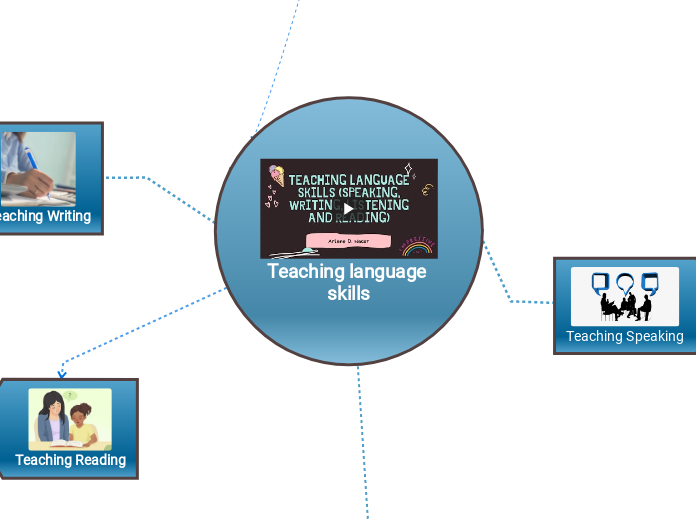Teaching language skills
Figure out new words by learning about the individual meanings of suffixes and prefixes.
Teaching Reading
A skill-based perspective of reading conceptualizes reading as having the ability to recognize codes and to comprehend as well as interpret meanings of those codes.
Advanced learners of English can be taught a wide range of reading strategies
guessing meanings and
topics of a passage
making inferences
scanning
skimming
The important role of reading skills in developing one’s communicative competence has often been underestimated.
Teaching Writing
Another approach to teaching writing skills that has been influential and that has been employed by language practitioners is the “cognitive process” writing movement.
It stresses the need to focus on the mental behaviors of writers at work
How writers write
This movement advocates the conceptualization of writing as process and meaning making.
In teaching writing skills, two of the most popular and compelling perspectives of L2 writing and its pedagogy are the contrastive rhetoric perspective and the cognitive process writing perspective.
These two schools of thought
have influenced and shaped how English-language teachers conceptualize writing in English and teach writing
Teaching Listening
There exist two approaches to the teaching of listening: bottom-up and top-down approaches
A bottom-up pedagogical approach focuses on improving students’ knowledge of vocabulary and grammar
There are different tasks students can perform
Multiple choice listening comprehension questions
Cloze listening
A bottom-up approach tends to adopt a
view that comprehension happens when the incoming linguistic input is decoded, recognized, and understood.
These linguistic input could be different elements
clauses
sentences
words
sounds (phonemes, syllables)
Listening specialists have observed that the approaches to the teaching of listening skills have evolved
Physiological and cognitive processes at different levels as well as attention to contextual and socially coded acoustic clues have constructed listening as the
most difficult skill to learn and teach.
Listening was not recognized as a skill in its own right until the
era of CLT (communicative language teaching).
Teaching Speaking
Do you know what a 'suffix' is?
A suffix is an affix placed at the end of the root word, which can change its tense and/or meaning.
Teaching of speaking skills should be based on the following characteristics of a real speech or the nature of oral discourse
Meanings are negotiated and jointly constructed by the interactants.
Speech contains colloquial expressions.
Speakers use fixed or chunks of phrases.
Speech contains fillers and hesitation markers.
Speaking is either planned (e.g., a formal speech) or unplanned (e.g., a
discussion or a conversation).
Speech is composed mainly of short phrases and clauses.
The changes in the way English is spoken in different sociocultural contexts by multilingual and translingual speakers of English have generated a number of
pedagogical implications for teaching speaking skills in a classroom context.
Over the last two decades, the importance of oral skills and therefore using authentic or real-life communication in teaching materials has been emphasized by the paradigm of communicative language teaching.
Other
The teaching of this skills was not perceived as important until the introduction of the direct method and audio-lingual method.
Teaching language skills is often the key focus or main element in the language teaching practice.
Knowledge of the theory and practice of teaching these skills is one of the key learning objectives of many universities around the world.
The major dimension of teaching such language skills involves teaching students how to use English—both spoken and written— in many different ways.
To develop critical awareness of existing
assumptions and practices that promote linguistic and cultural inequality.
To take ownership of their own use of English
To negotiate effectively across cultures and Englishes
To shuttle appropriately between diverse varieties, cultures, and
communities
The teaching of such language skills should be underpinned or informed by a dynamic perspective of language variation
Such skills can be divided into two groups
Productive skills
Receptive skills









